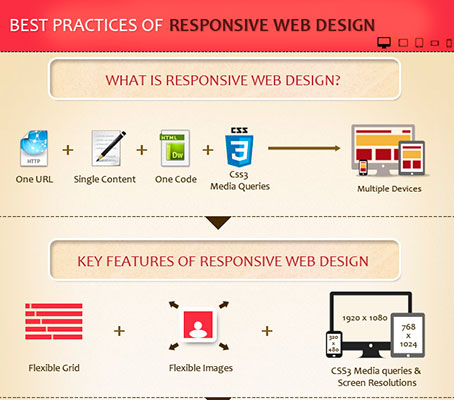Crucial Web Site Design Insights: Recommendations For Developing An User-Friendly User Interface
Crucial Web Site Design Insights: Recommendations For Developing An User-Friendly User Interface
Blog Article
Authored By-Abildtrup Gammelgaard
When it comes to site design, making sure user-friendliness is key. From responsive design to streamlined navigating, every component plays a crucial duty in developing a website that deals with your target market's needs. However what concerning the finer details that can make or damage a user's browsing experience? Keep tuned as we reveal some often-overlooked tips that can raise your website's functionality to the next level, making it truly stick out in the digital landscape.
Relevance of Responsive Layout
Receptive style is a critical facet of modern internet site growth. Ensuring your website is responsive ways that it can adjust to different screen sizes and gadgets, supplying a smooth experience for individuals.
With the enhancing use of mobile phones and tablets to access the web, having a responsive style is crucial for getting to a bigger audience. It assists in improving user experience by making your site very easy to navigate and continue reading any tool.
Furthermore, responsive design can positively affect your internet search engine rankings, as internet search engine like Google prioritize mobile-friendly websites. By having a receptive style, you're also future-proofing your internet site, as brand-new devices with varying screen dimensions remain to arise.
Simplify Navigation Framework
To enhance customer experience and facilitate easy access to info on your website, simplifying the navigating structure is paramount. When creating your site, focus on creating a clear and intuitive navigation menu that aids site visitors locate what they're trying to find quickly.
Limit the number of menu items to the essentials, organizing related pages with each other to stay clear of frustrating users. Use detailed labels that plainly show the web content of each web page, making it less complicated for users to understand where each link will certainly take them.
Take into consideration implementing dropdown food selections for subcategories to prevent littering the primary navigating bar. Additionally, consist of a search bar plainly on the page for users that choose searching for specific information.
Focus on mobile responsiveness in your navigation style to make sure very easy accessibility on all tools.
Enhance Page Tons Speed
Improving web page tons speed is crucial for keeping visitors on your web site. Slow-loading web pages discourage users and can cause high bounce prices. To maximize linked webpage , start by enhancing images. Compress wcag 2.1 ada section 508 without jeopardizing high quality to minimize their file dimensions.
Furthermore, allow browser caching to keep often accessed resources locally, accelerating lots times for returning visitors. Minify CSS, JavaScript, and HTML documents by getting rid of unneeded characters, remarks, and formatting, enhancing tons rate.
Consider making use of a content shipment network (CDN) to disperse your website's content throughout multiple servers worldwide, decreasing latency for customers accessing your website from different areas. Last but not least, restrict making use of third-party manuscripts and plugins, as they can considerably affect lots times.
Verdict
To conclude, by including responsive style, simplifying navigation, and optimizing page tons rate, you can develop an easy to use web site that appeals to a broader target market and improves customer experience. These essential elements make certain that site visitors can easily gain access to and navigate your site throughout different tools, leading to enhanced involvement and satisfaction. By concentrating on these key aspects, you can build an effective site that maintains customers coming back for more.
